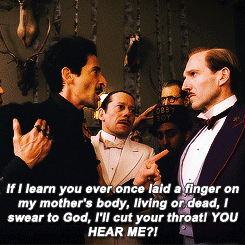Why Is The Circumference Of A Circle The Derivative Of Its Area?: A Visual Explanation


Why is the Circumference of a Circle the Derivative of its Area?: A Visual Explanation
Circumference = 2πr
Area = πr^2
You may have noticed that the circumference of circle is the derivative of its area with respect to the radius. Similarly, a sphere’s surface area (SA = 4πr^2) is the derivative of its volume (Volume = 4/3πr^3). This isn’t a coincidence! But why? And is there an intuitive way of thinking about it?
Calculus refresher: Finding the derivative of a function is finding its rate of change. For example, consider the function y = x^2. The derivative of this function is 2x, which describes how much, in terms of x, y changes when x changes. Integration is the reverse process of derivation. Finding the integral of a function first considers the function a rate of change. Then, by multiplying it by infinitesimally small increments of x from a lower bound to an upper bound, the process of integration computes the definite integral, a new function whose derivative was the original function. Think of a car moving at a velocity over time. The rate of change of the velocity is the cars acceleration. Additionally, if you multiply the velocity by how much time has passed, you get the total distance traveled by the car. Therefore, acceleration is velocity’s derivative and distance traveled is velocity’s integral.
So what is the rate of change of a circle? Consider a circle with the radius r. If you increase the radius by ∆r, the area of the new circle is πr^2 + the area of the added ring. The ring’s area is 2πr (which is the rings length) * ∆r (the ring’s height). This is indicated by the first gif, in which the new rings have the length ∆r. To find the rate of change, we take the limit as ∆r goes to 0. The limit as ∆r goes to 0 of 2πr∆r is simply 2πr!
Let’s find the area of a circle with radius r by integrating its 2πr, its circumference. For the lower bound of our integration, think of the smallest circle we can make—a circle with radius 0. The largest circle we can make is a circle with radius r—our upper bound. We draw our smallest circle (radius 0), and then continuously add tiny rings to it by increasing r and drawing another circle, keeping the change of r as tiny as possible. We stop when r has reached our upper bound. As the second gif demonstrates, we are left with what is pretty much a filled circle! We went from 1 dimensional lines, to a 2D figure with an area of πr^2. This a fun way of visualizing the integration of 2πr from 0 to r!
So, based on this explanation, can you figure out a way to visualize why the surface area of a sphere is the derivative of its volume? Hint: jawbreakers (or onions, alternatively)!
More Posts from Roulette-a and Others
Giving Your Character the Introduction He/She Deserves
The one, two, three punch for introducing your character.
What we can learn from the Grand Budapest Hotel
The Protagonist:
We have M. Gustave.
1. We see him looking over a balcony and before your know it he is calm directing at least 10 of his subordinates and what to do.
2. Next he’s sitting down eating breakfast with a woman twice his age (90 years old at least). He takes her hand, and after he attempts to console her and says:
“Dear God what have you done to your fingernails!? This diabolical varnish, the color is completely wrong. It’s not that I don’t like it. I am physically repulsed. ”
3. M. Gustave is sitting next to the woman, his lover, and tells her to hush and starts to recite poetry.
Three quick scenes in less than three minutes, and we already have the full sense who this character is. (1) He’s busy. And the way he instructs his crew shows that he has been doing it for a while. He’s confident and isn’t afraid to tell people what to do. (2) He has a thing for older women, and the way things look is important to him. Gustave sees nothing but beauty in people, and the way he reacts to the fingernails shows us that class and elegance matter. (3) Telling someone to hush and then reciting poetry in an elevator envelopes the two things about M. Gustave. He is quirky and sophisticated.
The Antagonist
We have Dmitri
1. When we first see him he is drinking a glass of whiskey waiting to see what was left to him in his mother’s will. He’s dressed in all black, although we get the sense that regardless of the day he would still be wearing black. One of his goons is behind him. By the way they are sitting, you can tell that Dmitri has people working for him.
2. The first line out of Dmitri’s mouth is “That fucking faggot!” directed at M. Gustave himself.
3. He confronts M. Gustave and punches him in the face, and his henchmen is there to back him up.
So who is Dmitri? (1)A person who seems to care more about the will than his mother. (2) Someone who will shout and fight and get others to do things he doesn’t want to do. (3) He’s vulgar and doesn’t have a problem speaking his mind.
Applying this to your writing
Give the reader the one two three. Three things one after another that make them understand who your character really is. Boom Boom Boom. Easier said then done. So you try it.
Try to think of three scenes/phrases/mannerisms that you can use in introducing your character and intertwine them to solidify who your character is. It can be short and sweet and when the reader is done reading he should be able to list all three character traits.
Also watch this movie.









Grand Budapest Hotel mood board









Click here to find me on pinterest
Ancient Moche Female Ruler Is Given A Face

We do not know what she called herself, but today she is known as the Lady of Cao. She lived and died in northern Peru 1,700 years ago. We know she was a high-status woman of the Moche culture, because she was buried in a tomb in a pyramid, with a crown and surrounded by gold and copper artifacts. The tomb also suggests that Lady of Cao may have been a warrior: she was buried a number of weapons, including two massive war clubs, and twenty-three spear-throwers!
Modern science has revealed that the Lady of Cao was in her twenties when she died, likely of childbirth or complications following childbirth. Her feet, legs and face were tattooed with magic symbols of serpents and spiders. And now, science has revealed to us her face.




Grand Budapest Hotel (2014) dir. Wes Anderson
Do you think I am an automaton? — a machine without feelings? and can bear to have my morsel of bread snatched from my lips, and my drop of living water dashed from my cup? Do you think, because I am poor, obscure, plain, and little, I am soulless and heartless? You think wrong! — I have as much soul as you — and full as much heart! And if God had gifted me with some beauty and much wealth, I should have made it as hard for you to leave me, as it is now for me to leave you. I am not talking to you now through the medium of custom, conventionalities, nor even of mortal flesh: it is my spirit that addresses your spirit; just as if both had passed through the grave, and we stood at God’s feet, equal — as we are!
Charlotte Brontë, Jane Eyre (via wonderwarhol)




Les temps sont durs pour les rêveurs
-
 cosmic-kiwi reblogged this · 9 months ago
cosmic-kiwi reblogged this · 9 months ago -
 pagesforposey liked this · 1 year ago
pagesforposey liked this · 1 year ago -
 kirby5087 liked this · 1 year ago
kirby5087 liked this · 1 year ago -
 not-kashy liked this · 2 years ago
not-kashy liked this · 2 years ago -
 andrejupiter liked this · 4 years ago
andrejupiter liked this · 4 years ago -
 playful1510 reblogged this · 4 years ago
playful1510 reblogged this · 4 years ago -
 playful1510 liked this · 4 years ago
playful1510 liked this · 4 years ago -
 bbillster liked this · 5 years ago
bbillster liked this · 5 years ago -
 onaexploration liked this · 5 years ago
onaexploration liked this · 5 years ago -
 integraletothexy-blog liked this · 6 years ago
integraletothexy-blog liked this · 6 years ago -
 eaumiste liked this · 6 years ago
eaumiste liked this · 6 years ago -
 110521sgl liked this · 6 years ago
110521sgl liked this · 6 years ago -
 ratemylabia reblogged this · 7 years ago
ratemylabia reblogged this · 7 years ago -
 aggressiveoptimism reblogged this · 7 years ago
aggressiveoptimism reblogged this · 7 years ago -
 pilepoil69 reblogged this · 7 years ago
pilepoil69 reblogged this · 7 years ago -
 klithigweecehl-blog liked this · 7 years ago
klithigweecehl-blog liked this · 7 years ago -
 dustinnumbers-blog liked this · 7 years ago
dustinnumbers-blog liked this · 7 years ago -
 roulette-a reblogged this · 7 years ago
roulette-a reblogged this · 7 years ago -
 mylikedlist reblogged this · 7 years ago
mylikedlist reblogged this · 7 years ago -
 piei01 liked this · 7 years ago
piei01 liked this · 7 years ago -
 verniercaliber liked this · 7 years ago
verniercaliber liked this · 7 years ago -
 bozonkwark reblogged this · 7 years ago
bozonkwark reblogged this · 7 years ago -
 loconekoworld liked this · 7 years ago
loconekoworld liked this · 7 years ago -
 loconekoworld reblogged this · 7 years ago
loconekoworld reblogged this · 7 years ago -
 justyoureverydaygeeksquad reblogged this · 7 years ago
justyoureverydaygeeksquad reblogged this · 7 years ago -
 mch-ouo liked this · 7 years ago
mch-ouo liked this · 7 years ago -
 sonbperez-blog liked this · 7 years ago
sonbperez-blog liked this · 7 years ago -
 eynrbrzm liked this · 7 years ago
eynrbrzm liked this · 7 years ago -
 cantoparati reblogged this · 7 years ago
cantoparati reblogged this · 7 years ago -
 chot-dusit liked this · 7 years ago
chot-dusit liked this · 7 years ago -
 mememealwaysme-blog liked this · 7 years ago
mememealwaysme-blog liked this · 7 years ago







